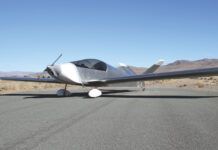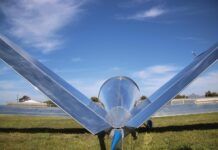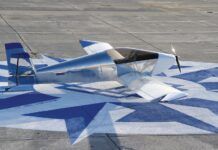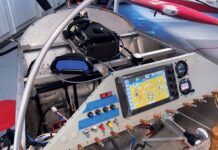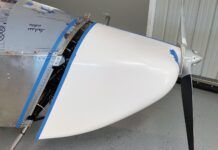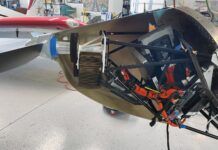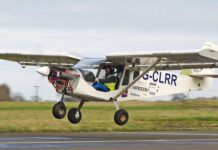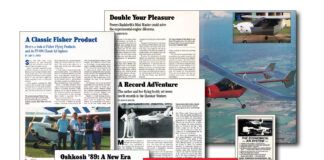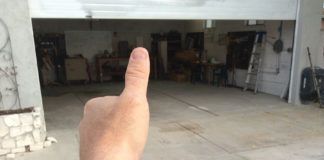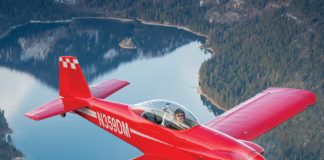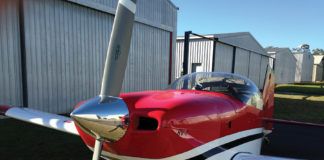Sustainable Aviation Symposium – Part 2
Dr. Joseph Kallo and the Power Behind the HY 4
While we’re still waiting for the battery breakthroughs that will let us fly infinite distances without recharging, several motors await energizing from whatever source is available. Speakers at the First Sustainable Aviation Symposium included solar energy, new battery chemistries, fuel cells and hydrogen, or even the regenerative power of the air itself in their presentations.
Dr. Kallo, in describing the HY 4, the Pipistrel airframe previously powered by the then largest electric motor in an airplane (now supplanted by the Siemens SP260D), had 1,100 pounds of batteries on board to enable traversing the 200-mile requirement for the 2011 Green Flight Challenge.
The HY 4 will use a combination of 10 kilowatt hours of energy from 50 kilograms (110 pounds) of batteries and 33 kilowatts from 80 kilograms (176 pounds) of fuel cells to turn the single propeller mounted on the central pod. This type of hybridization showed up in several presentations, a tacit acknowledgement that batteries are still not ready on their own to replace fossil fuels in aircraft. The combined energy sources need to provide takeoff power for three minutes, and the system has been tested for 10. If hydrogen can be extracted from water through solar means, the HY 4 would indeed be emissions free.
Joseph Kallo showed a six-seat hydrogen-powered aircraft that would cruise at 150 knots (172.5 mph) and a future 40-seat commuter liner that could travel 1,000 kilometers (620 miles) on pressurized hydrogen and 2,000 kilometers (1,240 miles) on liquid hydrogen.
These would require a ready source of H2, something Germany is developing with great resolve, and something which NASA Langley’s Chief Scientist sees as totally plausible.
Dennis Bushnell of NASA – a Multi-Faceted Energy Future
Immediately following Dr. Kallo’s talk, Dennis Bushnell, Chief Scientist at NASA Langley, gave a far-ranging talk about how we might expect to power all the industry, homes, EVs and personal electronic devices of the future.
He showed at least nine different ways scientists are extracting hydrogen from water, often mimicking biological models like photosynthesis. Each would essentially provide “free” hydrogen without the need for fossil fuel-powered extraction methods – something critics point to as a negative in green energy attempts.
He discussed glycophytes (fresh water plants) and halophytes (salt water plant), and how, “Just a goodly portion of the Sahara. [is] capable of providing sufficient biomass to replace ALL of the fossil carbon, provide petrochemical feedstock and requisite food whilst returning much of the 68 percent of fresh water now used for conventional agriculture to direct human use.” Dennis claims this would “solve” issues of land, water, food and climate that now confront us.
He finished with an overview of potential energy sources, including many biological feedstocks for fuel that could power our aircraft. Boeing is working with the UAE, for instance, on bio-jet-fuel made from the Halophytes irrigated by sea water. Dennis ended with projections that show by 2050, 139 countries could be 100-percent powered by renewable energy.
Bill Parks and Aerovironment
Bill Parks shared a history of electric and solar-powered aircraft made by Paul MacCready’s company and detailed the power bus architectures, solar arrays and primary (non-rechargeable) battery backups that made these early “green” aircraft such as Pathfinder, Centurion, and Helios possible. Primary batteries generally give better energy density than secondary (rechargeable) ones, and for one mission, are just fine. He made the point that all systems in such applications must be robust, redundant, and have all “corner cases” tested. Circuit protection on the main bus cannot fail from any single component failure. His service extended to the hydrogen-powered Global Observer.
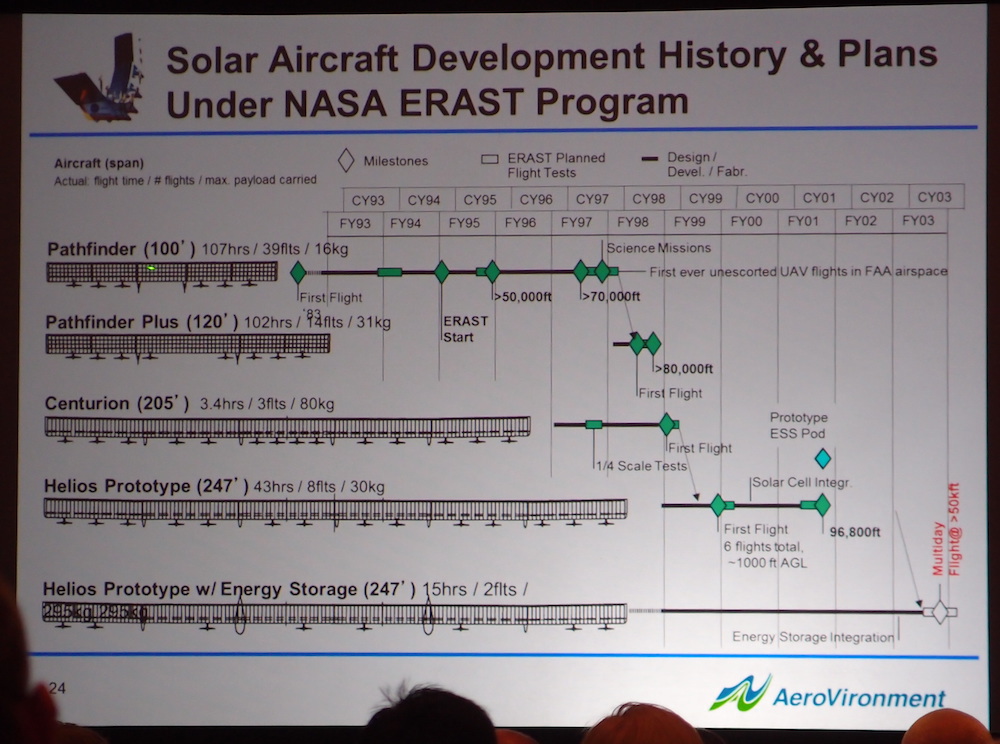
Phil Barnes and Regenosaur
Phil Barnes has been developing a case for regenerative soaring for several years, designing a sailplane-like machine that would take off under its own battery power, and while gliding between thermals, use its propellers as wind turbines to regenerate energy fed back into its batteries. It doesn’t seem like perpetual motion when Phil explains it, and since he’s an aerospace engineer with 34 years’ experience and numerous papers published by the AIAA and the SAE.
He combines classical propeller theory with CAD techniques to extract energy from the air moving over and by an airplane. Adding to that a power design that takes much from the ubiquitous Prius and his observations of large soaring birds, especially the Albatross, he makes a convincing case for literally flying on air.
See his papers on his excellent web site (www.howfliesthealbatross.com), which also has insights on dynamic soaring, birds, and Nazi-era jet aircraft.
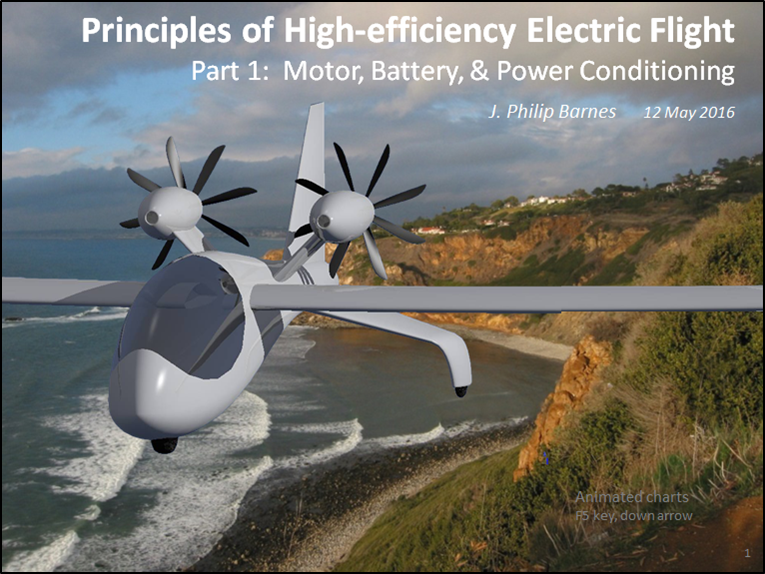
David Calley and High-Torque, Low-Speed Motors
David Calley has been working on small, lightweight motors with high torque for years. He showed us that, as excellent as modern motors are, they haven’t reached the limits of torque density that would enable large, slow-turning propellers for vehicles like electric short-takeoff and landing (ESTOL) aircraft without the use of gearboxes that add complexity and weight. He claims his motors are solutions to the problem.
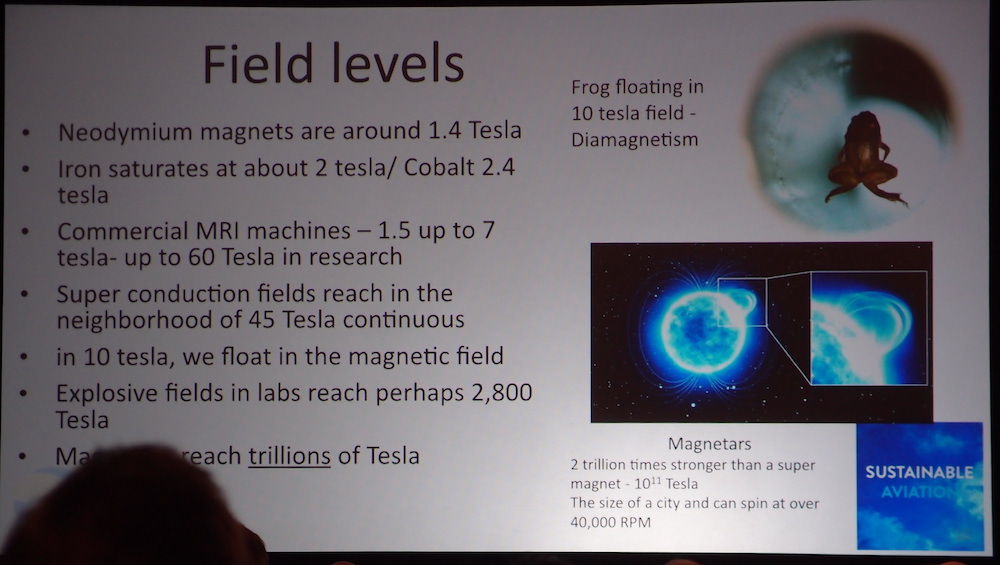
Historically, motors are getting smaller, lighter, and more powerful. His example of a classic Hitachi five-horsepower motor started at 150 kilograms (330 pounds) and was 400 millimeters (15.74 inches) in diameter. Compare that to a modern brushless model motor, which can equal the power (if not the torque) in a much smaller, lighter package, often under five pounds. David’s motor would use a small amount of active materials in a transverse axial flux arrangement with square winding wires to help gain great efficiency.
His depiction of Tesla measurements, the strength of a magnetic field, shows we have much to learn and possibilities to explore. Earth’s magnetic field is a puny 0.000005 Tesla. Commercial MRI machines reach levels of 1.5 to 7 Tesla, and strong lab magnets reach 10. Magnetars far away in space (luckily) reach levels of trillions of Tesla. That would stop pacemakers and pull fillings out. Calley is reaching for some of the terrestrially more reachable numbers in his quest for powerful, light motors, concluding that he sees no fundamental limits to torque or power possible with new materials and topologies.
Next: We’ll conclude with more on batteries, solar cells, Sky Taxis, and how we might keep everything sequenced and separated in this brave new aerial world.


